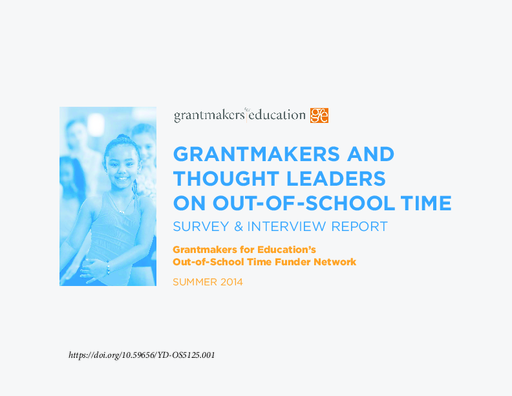Breadcrumb
- Wallace
- Reports
- Grantmakers And Thought Leaders ...
Grantmakers and Thought Leaders on Out-of-School Time
Survey & Interview Report

Overview
More
Less
- Author(s)
- Kathleen Traphagen
- Publisher(s)
- Grantmakers for Education’s Out-of-School Time Funder Network
Summary
This two-pronged report, written by a network of donors supporting high-quality afterschool, expanded learning or other out-of-school time (OST) experiences for young people, examines the priorities of these grantmakers. It also surveys key field leaders, including heads of youth-serving nonprofits and researchers, to gain their perspectives on the current state of the field, as well as their recommendations for funders.
From the funders’ perspective: A 2013 survey finds the two most common outcomes grantmakers hope for from OST remain unchanged from a similar 2008 survey: improved academic achievement and increased student engagement. However, in 2008 grantmakers thought the funders’ network should concentrate on “financing/sustainability,” while in 2013 the top priority was the “role of OST in K-12 reform.” Also, 67 percent of respondents in 2013 choose STEM (Science, Technology, Engineering and Math) as the focus for the OST activities, up from 51 percent in 2008.
From field leaders: Some believe OST should “continue to claim its space as different from school;” others want to “jettison the term” (OST) and move the field’s agenda “to a more central place in the education reform debate.” Despite the differences, common ground was also found, including a number of suggestions for grantmakers:
- Take a stronger lead in moving K-12 education reform toward a broader view of young people’s learning and development;
- Support systemic efforts to help programs become high quality and evidence-based;
- Invest in research and scaling models that yield results;
- Prioritize development of the workforce and leadership; and
- Pay attention to: Common Core, organizational capacity, apprenticeships, supporting thought leaders and developing short-term experiments to prototype solutions.

